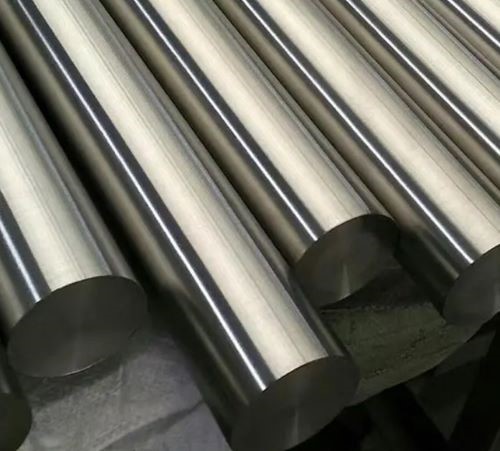Grade 38 Titanium: A High-Strength And Corrosion-Resistant Alloy
Introduction
Titan Grade 38 is a titanium alloy that offers a documented combination of high tensile strength and corrosion resistance. In this article, we detail the measured properties and varied applications of this alloy in sectors that require precise structural performance and resistance to chemical attack.

Figure 1. Products made from Titan Grade 38
Titan Grade 38: Composition
Titanium is a versatile metal that is employed across many industries. It is available in various grades or alloys. Commonly used grades include Grade 1, Grade 2, Grade 5 (Ti-6Al-4V) and Grade 38.
- Grade 1 (Ti Grade 1, UNS R50250) is the most ductile and soft titanium alloy.
- Grade 5 (Ti-6Al-4V, UNS R56400) provides a measured balance of strength, corrosion resistance and heat performance. It is widely used in various applications.
- Grade 38 (Ti-4Al-2Mo-2Sn, UNS R54250) has a composition consisting of approximately 4% aluminium, 4% molybdenum, 2% vanadium, 2% tin, 0.5–1.5% iron, 0.2–0.3% silicon and 0.06–0.08% oxygen, with the balance being titanium.
For further reading: Different Grades of Titanium and Titanium Alloys
Titan Grade 38: Advantages
Owing to its composition, Titan Grade 38 exhibits quantifiable tensile strength and a high level of corrosion resistance.
High Tensile Strength:
Grade 38 has a tensile strength of approximately 1 030 MPa (149 000 psi). This value exceeds those of Grade 2 (345 MPa) and Grade 5 (895 MPa). Yield strength and hardness also show higher measured values compared with other titanium alloys. Aluminium and vanadium combine with the titanium matrix; consequently, these elements increase strength. Iron and silicon contribute to enhanced ductility.
Corrosion Resistance:
Grade 38 offers a quantifiable resistance to corrosion, making it suitable for use in aggressive chemical environments. It performs at a level that surpasses alloys such as Grade 5 and Grade 9. The aluminium content forms a protective oxide layer on the surface, thereby reducing further corrosive attack.
Heat Resistance:
Grade 38 retains its measured properties at elevated temperatures. This permits its use in applications that require high temperature performance, including aerospace engineering and industrial processing.
Biocompatibility:
Grade 38 demonstrates biocompatibility and is used for certain medical applications such as implants and surgical instruments. Titanium alloys do not react with bodily tissues or fluids; consequently, they are used in medical devices that are implanted safely.
Titan Grade 38: Applications
The alloy’s combination of high tensile strength and corrosion resistance plays a central role in various industrial sectors.
Marine and Offshore:
Due to its measured corrosion resistance, Grade 38 is used in marine and offshore structures that are exposed to seawater. This ensures durability in saline conditions.
Chemical Processing:
The resistance to corrosive chemicals makes Grade 38 a suitable choice for chemical processing equipment, including reactors, heat exchangers and piping. Its use maintains the integrity of systems operating under corrosive conditions.
Aerospace:
The alloy is employed in aerospace structural components that require both high tensile strength and corrosion resistance. Its use contributes to the reliability of engineering systems.
Oil and Gas Industry:
Grade 38 is used in equipment for oil and gas extraction and processing. It is applied in both offshore and onshore installations where exposure to corrosive fluids is significant.
Medical Implants: Although less common in medical applications than other titanium grades, Grade 38 is used in specialised implants that require measured corrosion resistance and biocompatibility.
Conclusion
In summary, Titan Grade 38 is a high-strength titanium alloy with quantifiable corrosion resistance. It is used across several sectors including marine engineering, aerospace and chemical processing. Technological and environmental advances indicate that Grade 38 will continue to play a role in the design of durable and sustainable systems. We thank you for reading and expect that this article has provided a clearer understanding of the various titanium alloys available. For further details, please visit Stanford Advanced Materials (SAM).

 Bars
Bars
 Beads & Spheres
Beads & Spheres
 Bolts & Nuts
Bolts & Nuts
 Crucibles
Crucibles
 Discs
Discs
 Fibers & Fabrics
Fibers & Fabrics
 Films
Films
 Flake
Flake
 Foams
Foams
 Foil
Foil
 Granules
Granules
 Honeycombs
Honeycombs
 Ink
Ink
 Laminate
Laminate
 Lumps
Lumps
 Meshes
Meshes
 Metallised Film
Metallised Film
 Plate
Plate
 Powders
Powders
 Rod
Rod
 Sheets
Sheets
 Single Crystals
Single Crystals
 Sputtering Target
Sputtering Target
 Tubes
Tubes
 Washer
Washer
 Wires
Wires
 Converters & Calculators
Converters & Calculators
 Chin Trento
Chin Trento



